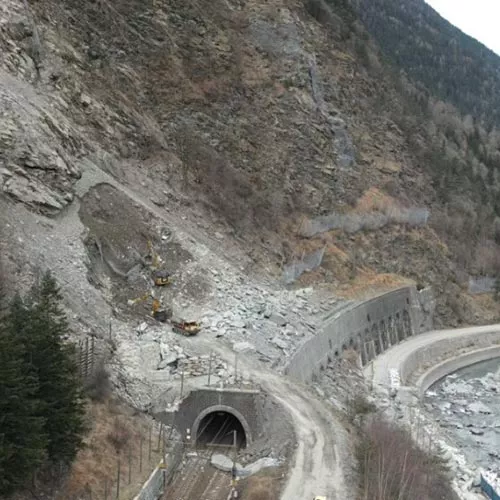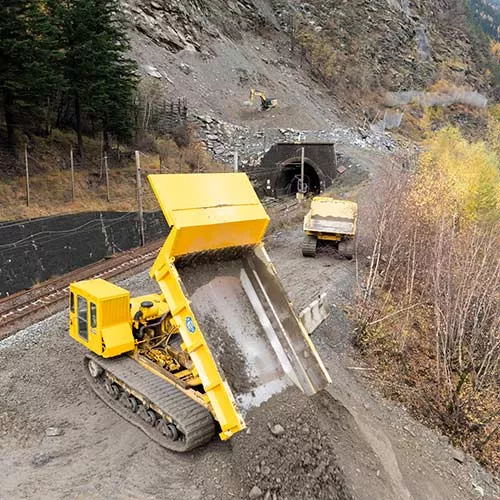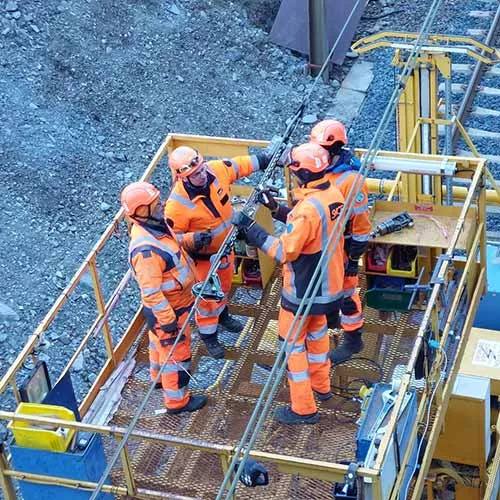
Paris-Milan: line reopens after teams overcome immense technical challenge
Train service between France and Italy officially resumed on 31 March, a year and a half after the devastating landslide that destroyed part of our infrastructure in the Alps. Take a behind-the-scenes look at our how SNCF Réseau teams and partners rose to this daunting technical challenge to restore service on a vital international route.
19 months of work
On Monday, 31 March 2025, a TGV operated by SNCF Voyageurs left Paris-Gare de Lyon bound for Milano Centrale. It wasn’t just another train journey. Instead it signalled the return of direct high-speed rail service between the two cities after a 19-month hiatus. A milestone achieved through the extraordinary dedication of SNCF Réseau teams who worked tirelessly to reopen a vital international route.
Watch the story of this exceptional project

“The biggest rockfall since 1978”
On Sunday, 27 August 2023, around 5.00 pm, a massive landslide occurred near Freney in the Maurienne Valley. Around 15,000 m3 of rock tumbled down the mountainside, destroying part of the railway track below and cutting off the line completely. It was the most severe event of its kind affecting a railway since 1978. In response, SNCF Réseau—supported by local teams from Savoie—immediately stepped in to secure the area and begin preparations for restoring train service.
15,000 mᶟ
of rock fell during the landslide

7/7
SNCF Réseau teams worked 7 days a week

23,000 m²
of protective fencing installed on the cliff

Breakthrough solution to clear debris
Starting in autumn 2023, specialists from the Savoie region undertook major cliffside safety operations—mechanical clearing, rock anchors, wire mesh, rockfall barriers and more. At the same time, SNCF Réseau introduced a cutting-edge solution to safely remove debris blocking the railway tunnel: remote-controlled heavy machinery that allowed teams to operate from a safe distance. Once the tunnel and track were cleared, the focus shifted to repairing damaged infrastructure, including power systems and signalling equipment.
Recycling cleared materials
Between December 2023 and February 2024, landslide debris was collected, stored and analysed for future use. SNCF Réseau now plans to recycle it for upcoming construction projects, with large rocks repurposed as riprap for stabilizing slopes, and smaller stones crushed and screened for use as backfill.

Final months focused on infrastructure repairs
The final push came in early 2025, as teams ramped up efforts to finish repairing critical infrastructure and overhead lines. They also installed rockfall detection systems, checked signalling cables and revisited tracks. In March, final touches included rail deoxidation and system-wide inspections to ensure all systems were go—primed and ready for safe, reliable service.
Reconnecting France, the Alps and Italy
The return of direct high-speed TGV INOUI service links France and Italy once again, with three round trips a day connecting Paris, the Alps, Turin and Milan. This vital link not only boosts cross-border travel between France and Italy, it also promotes sustainable transport across Europe. SNCF Voyages Italia has operated in Italy since 2011 and continues to play a key role in connecting the two countries. Today international travel accounts for 22% of SNCF Voyageurs’ total traffic—a figure it hopes to raise to 30% by 2030.
Share the article